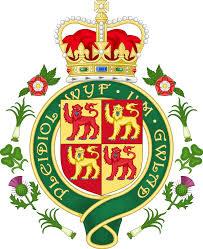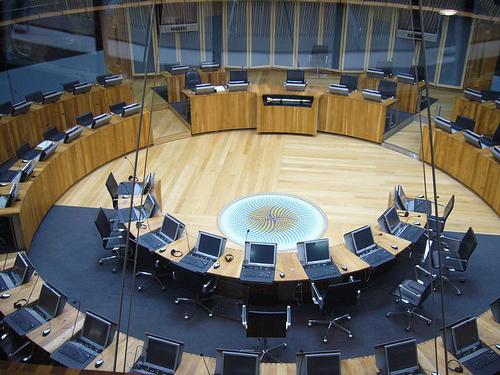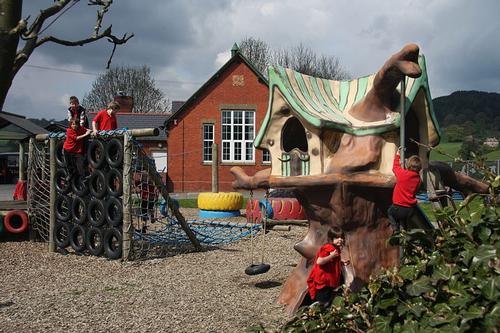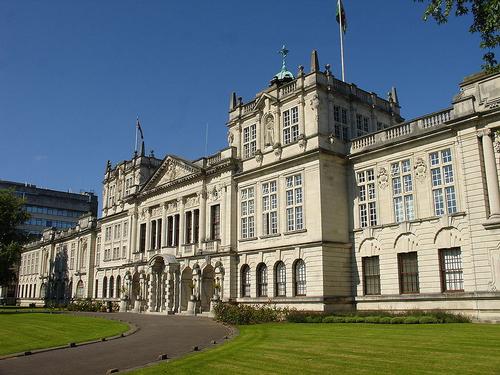WALES
Society

Society

Cities in WALES
| Cardiff |
Popular destinations UNITED KINGDOM
| England | Northern ireland | Scotland |
| Wales |
Society
State structure
Politically, the Principality of Wales had lost its independence since 1282. The English king Edward I defeated the Welshmen and added Wales to his empire. In 1301, the king gave this new kingdom to his son, the English prince. This tradition continues to this day; the British heir apparent is entitled "Prince of Wales". Charles, the son of Queen Elizabeth, has been the "Prince of Wales" since 1969.
 Debating Chamber National Essemblee WalesPhoto: Public domain
Debating Chamber National Essemblee WalesPhoto: Public domain
Wales has gained increasing internal autonomy since 1951. The establishment of the Welsh Office in 1964 was an important event. This body, headed by the Secretary of State for Wales, has increasing powers. Under the Blair administration, specific regional affairs were decentralized and the powers of the people's own parliament expanded. Despite strong nationalist sentiments, the Welshmen rejected a complete disengagement from Britain in a 1979 referendum. Wales still has a nationalist party, Plaid Cymru.
From 2000, Wales is governed by the 60-member National Assembly for Wales; elections were held in May 1999. The members of this national parliament are elected for four years and elect a president from among them, the "Prif Ysgrifennydd y Cynulliad" or the first secretary of the Assembly. This is the head of the Executive Committee, the day-to-day management. Parliament mainly focuses on matters such as education, health care, housing and Welsh language and culture.
The Secretary of State for Wales, the Minister for Welsh affairs, is a member of the British cabinet and Wales has 40 representatives in the 659-member British Parliament, the House of Commons.
Administrative division
Administratively, Wales has been divided into eight counties since 1974 (Gwynedd, Clwyd, Powys, Dyfed, Gwent, West Glamorgan, Mid-Galmorgan and South Glamorgan), divided together into 37 districts. In 1996 a new reclassification took place, in which Wales was divided into 22 administrative units or unitary authorities, namely nine counties, ten county boroughs and three cities:
| County | Population | Area |
| Anglesey | 67,000 | 714 km2 |
| Carmarthenshire | 173,000 | 2395 km2 |
| Ceredigion | 75,000 | 1795 km2 |
| Denbighshire | 93,000 | 844 km2 |
| Flintshire | 149,000 | 438 km2 |
| Gwynedd | 117,000 | 2548 km2 |
| Monmouthshire | 85,000 | 850 km2 |
| Pembrokeshire | 115,000 | 1590 km2 |
| Powys | 127,000 | 5196 km2 |
| County Boroughs | Population | Area |
| Blaenau Gwent | 70,000 | 109 km2 |
| Bridgend | 129,000 | 246 km2 |
| Caerphilly | 170,000 | 278 km2 |
| Conwy | 110,000 | 1130 km2 |
| Merthyr Tydfil | 56,000 | 111 km2 |
| Neath Port Talbot | 135,000 | 442 km2 |
| Rhondda Cynon Taff | 232,000 | 424 km2 |
| Torfaen | 91,000 | 126 km2 |
| Vale of Glamorgan | 120,000 | 335 km2 |
| Wrexham | 129,000 | 498 km2 |
| Cities | Population | Area |
| Cardiff | 306.000 | 140 km2 |
| Newport | 137.000 | 190 km2 |
| Swansea | 224.000 | 378 km2 |
Education
Nursery education
Early childhood education (ages 2 to 5) is provided, usually free of charge, by central government, local government and private institutions. The government is expanding the educational options for the youngest children. Places will be offered at subsidized schools and nursery classes for all four-year-olds whose parents wish.
Primary education
 Primary school WalesPhoto: ArtByJude CC 3.0 Unported no changes made
Primary school WalesPhoto: ArtByJude CC 3.0 Unported no changes made
Compulsory education in Wales lasts from 5 to 16 years. The current education system has two structures: a two-level system and a three-level system.
The two-level system includes primary education for children aged 5 to 11 and lower secondary education for pupils aged 11 to 18. The three-level system consists of primary, middle and secondary schools (primary, middle and secondary schools). Middle schools provide four years of education to students aged 8 to 12 (primary middle schools) or aged 9 to 13 (secondary middle schools).
Compulsory education is divided into four stages: Key Stage 1 (5 to 7 years), Key Stage 2 (7 to 11 years), Key Stage 3 (11 to 14 years), and Key Stage 4 (14 to 16 years). Primary education consists of stages 1 and 2.
Lower secondary education
Lower secondary education consists of stages 3 and 4 and is aimed at students aged 11 to 18, but is only compulsory until the age of 16. This type of education generally starts with students aged 11 years. In the three-level system, students aged 12, 13 or 14 can enter secondary education.
Admission to a secondary does not normally require a proficiency or fitness test, but in certain regions students are admitted on the basis of a test.
The study of a foreign living language is compulsory in Key Stage 3 (11 to 14 years), and optional afterwards.
Higher secondary education
Higher secondary education is provided by schools and Further Education Colleges. Schools provide full-time education, while the Further Education Colleges offer both full-time and part-time courses, as well as one-day or one-week courses for working students. Students can take both theoretical and professional courses. The schools and colleges for students aged 16 to 18 are subsidized by the state. The study of Welsh as a first or second language and of another living language is optional. In almost all cases, students from schools and Further Education Colleges automatically transfer from the first to the second year of upper secondary education.
Higher education
 Cardiff University, WalesPhoto: Stan Zurek in the public domain
Cardiff University, WalesPhoto: Stan Zurek in the public domain
Since 1992, almost all higher education institutions belong to the same category. Each university is autonomous and decides itself on "degrees" (degrees) and other titles that it issues and also sets its own standards. Most universities have a wide spectrum of university and post-university courses. University vocational courses are generally offered by polytechnic universities.
Each higher education institution determines its own admission policy. In practice, given the competition for available places, most institutions require significantly more than the minimum qualifications. Students are required to be able to study in English and to deliver their work and exams in correct English. The University of Wales and some other institutions offer students the opportunity to take certain studies in Welsh and to deliver their work and exams in that language as well.
Each institution decides how many students it admits for each study, only for medicine, dentistry and teacher training, quotas are set by the government.
A first degree study is concluded with a Bachelor's degree. Such training takes three years, but may take longer for some disciplines.
A higher degree is a result that is obtained after a successfully completed additional study, after individual research or after a combination of both. It is issued on two levels:
-Master's Degrees: after at least one year of full-time study
-Doctorates: after the defense of a thesis
The Federal University of Wales (1872) has colleges in Cardiff, Swansea, Bangor, Lampeter and (all Welsh) Aberystwyth. Aberystwyth is also home to the famous National Library of Wales (1907).
There is also a university in Pontypridd (1992) and seven other higher education institutes. Higher education participation is above the national average in Wales.
Sources
Beeftink, A. / Zuid-Engeland en Wales
Van Reemst
Berkien, G. / Wales
Kosmos-Z&K
Berkien, G. / Wales
Kosmos-Z&K
Danse, W. / Midden-Engeland en Wales
ANWB
Fröhlich, D. / Wales
Deltas
Hendriksen, B. / Wales
Van Reemst
Hestler, A. / Wales
Marshall Cavendish
King, J. / Wales
Lonely Planet
Westphal, U. / Wales
Van Reemst
CIA - World Factbook
BBC - Country Profiles
Last updated June 2025Copyright: Team The World of Info